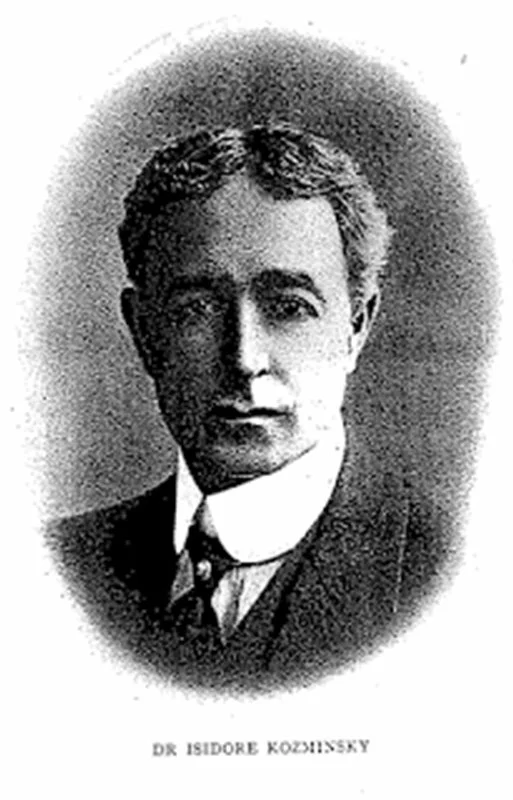Isidore Kozminsky
Isidore Kozminsky was a Melbourne jeweller, writer and occultist whose 1922 book The Magic and Science of Jewels and Stones includes one of the earliest published references to Lightning Ridge and its opal. His work blended detailed gemmological knowledge with mystical and occult interpretations.
Born in Mortlake, Victoria, Kozminsky was the son of Prussian-Jewish jeweller Simon Kozminsky, who established the family business in Melbourne during the gold rush era. Isidore joined the firm early and eventually expanded into numismatics and antiquities, operating through the family store and his own “Commercial Gallery” in Little Collins Street. He published catalogues, edited The Antiquarian Gazette from 1906 to 1911, and was a Fellow of the Royal Numismatic Society for over three decades.
The Magic and Science of Jewels and Stones (1922), his most substantial work, blends history, folklore, astrology and metaphysics. In it, he devotes several pages to the opal, praising its optical properties and spiritual symbolism. He draws on classical writers, biblical texts, and contemporary mineralogy, declaring opal “the gem of the gods”.
Kozminsky gives particular attention to Australian opal, writing:
“There is little doubt, however, that the wonderful opals from Australia’s fields have eclipsed anything yet found. The White Cliffs, the Lightning Ridge, and the newer field out North West are responsible for some of the most beautiful gems that have ever been unearthed.”
This passage is one of the earliest literary mentions of Lightning Ridge, describing the discovery of rich black opal in sandstone, placing the field alongside the European opal-bearing locations discovered by that time.
Though occasionally described as a member of the Hermetic Order of the Golden Dawn, there is no evidence Kozminsky belonged to any occult fraternity. His interest in astrology, Qabalah and symbolism was self-directed and deeply researched. He also published articles on numismatics, Aboriginal spirituality, and the talismanic significance of ancient coins.
Kozminsky married outside his faith and later adopted the name Francis Coton, possibly to distance himself from family tensions. He moved to London in 1935 and died during the war, either in an air raid or after a fall in the Underground; accounts vary.
Article: Research by Russell Gawthorpe and Leisa Carney, edited by Russell Gawthorpe. Sources: The Science and Magic of Jewels and Stones, Isidore Kozminsky, 1922; ‘Isidore Kozminsky: The Magic and Science of Jewels and Stones’, Out of Phase, Harper McAlpine Black, harpermcalpineblack.blogspot.com; ‘The numismatic interests of Isidore Kozminsky (1870-1944)’, David Rampling, Journal of the Numismatic Association of Australia, vol. 28, 2017, pp. 113-121.

